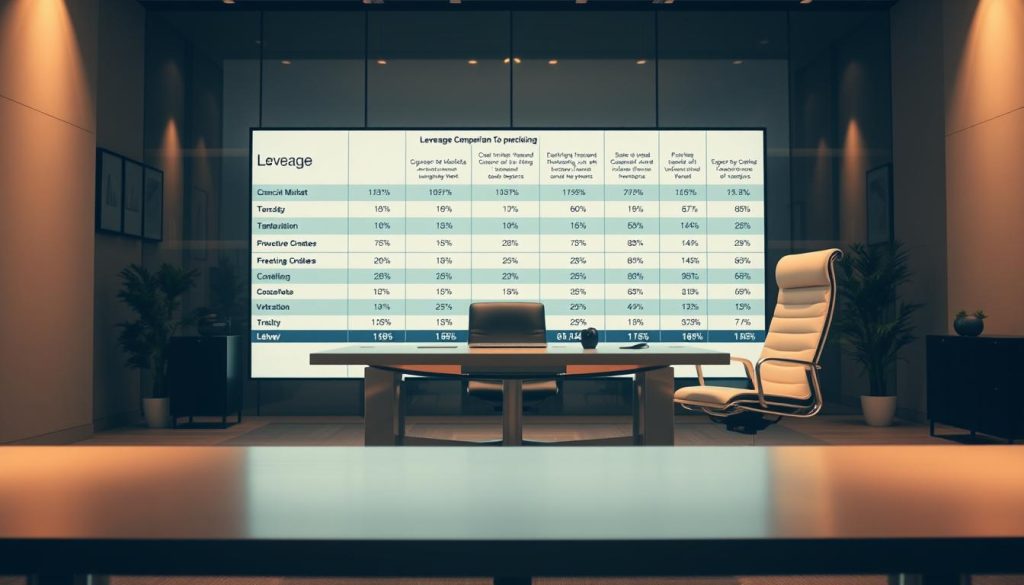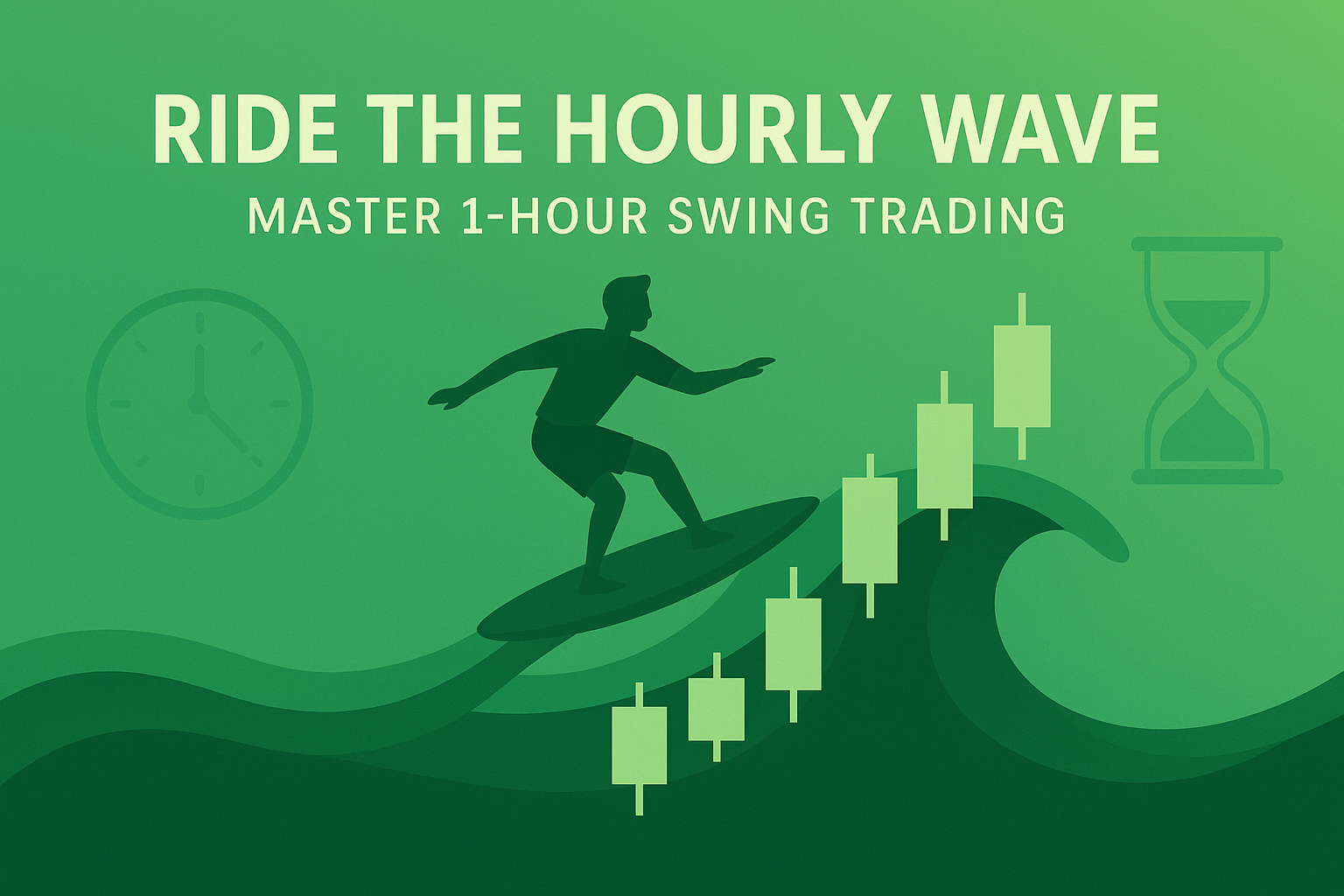New traders face a steep learning curve where preparation beats luck. This short guide shows why a clear plan, disciplined risk controls, and steady processes matter today.
Trading is not the same as long-term investment; it demands tight controls and faster execution in volatile markets. A repeatable approach to position sizing and stop rules protects capital and improves decisions.
Emotion often drives poorly timed entries and exits. A documented strategy and routine reflection cut that risk and speed learning.
The article previews practical themes: risk controls, planning, emotion management, leverage discipline, research quality, and execution consistency. The goal is not perfection but to limit costly setbacks and compound small advantages over time.
Key Takeaways
- Prepare a written plan and follow it on every trade.
- Use strict risk limits and stop orders for active positions.
- Focus on repeatable strategy, not one-off wins.
- Track time on screen and review decisions to speed learning.
- Balance research, discipline, and execution for consistent results.
Why New Traders Stumble: Understanding Intent, Markets, and the Learning Curve
Many novices chase top-performing assets and ignore the rules that protect capital when markets reverse. That behavior is often driven by fear of missing out rather than a clear plan or durable edge.
What beginners really seek: most say they want profits, but the immediate objective should be to avoid large drawdowns that can end their journey early. Managing downside preserves the ability to learn.
- Time horizons differ: investors hold stocks and ETFs for months or years; traders use futures or options and turn positions over quickly.
- Information and analysis matter: quality research filters noise and stops reactive, low‑quality entries.
- Pick one strategy: learn it thoroughly before expanding to avoid scattered progress.
Document why each trade is taken — edge, setup, and invalidation — and align capital, time, and effort with the chosen approach. Clear distinctions reduce confusion and help a trader measure real progress against proper benchmarks.
Common mistakes beginners make in trading
Many traders fall prey to headlines and hype, treating tips as tactical plans rather than signals to verify. That confusion pushes them into late, low‑probability entries and poor timing.
FOMO often converts small misreads into sizable losses. Traders buy extended moves near tops or short when markets capitulate, then watch tight stops get hit as volatility turns.
Guesswork replaces preparation when a trader skips a pre‑trade checklist. Acting on hope instead of rules invites repeating the same mistake.
How emotions compound risk
After a win, overconfidence raises size and loosens discipline. After a loss, revenge entries and paralysis both worsen decisions.
- Headline-driven entries lead to late timing and low odds.
- One undisciplined trade can trigger a chain of reactive trades that magnify drawdowns.
- Skipping liquidity checks, spreads, and event risk causes avoidable slippage and gaps.
Fixes focus on process: use repeatable setups, set clear invalidation points, and keep a tight journal loop to spot patterns fast. Mastering planning, risk control, and execution shrinks the frequency and impact of costly errors.
Skipping a Trading Plan and Clear Rules
A written blueprint turns guesswork into repeatable, testable behavior. Experienced traders set entries, exits, allocation, and maximum loss thresholds before any order is placed. New traders often skip that step or abandon their rules after a bad day.
Define entries, exits, position size, and max loss before placing trades
Codify entry criteria, confirmation signals, invalidation levels, and exact sizing. Pre-set price targets and stop placement so decisions are mechanical, not emotional.
Stick to the blueprint after bad days—don’t rewrite rules mid-trade
Include scenario analysis for news, gaps, and volatility to preserve discipline. Changes should occur only after structured post-trade analysis, not during active risk.
- Set per-trade and daily loss limits to protect capital.
- Use simple, testable strategy rules and a checklist for each setup.
- Define no-trade conditions to avoid low-quality market environments.
Track rule adherence in a journal to measure process quality, not just P&L. Clarity in the plan builds confidence and reduces emotional interference during live trading.
Trading Without Risk Management
Without rules to limit exposure, a few bad moves can erase months of progress. Effective risk management starts with defining per‑trade and account caps before any order is placed.
Stop-loss orders: types, slippage risk, and why canceling stops is costly
Use standard, trailing, or guaranteed stops depending on the market and instrument. Standard stops may execute below the set level during gaps; guaranteed stops lock execution but cost extra.
Canceling a stop to avoid a small loss is dangerous. Removing the guard turns a planned small loss into uncontrolled exposure and larger losses to the account.
Risk-reward ratios and position sizing to protect capital
Set a target risk-reward and size positions so that the defined loss equals the planned fraction of the account. Uniform sizing across setups stabilizes outcomes, not conviction.
- Predefine max open positions and correlated exposure.
- Backtest stop distances against typical volatility to avoid early exits.
- Set take-profit levels to lock gains and balance reward ratios.
Accepting losses quickly vs. letting small losses grow
Successful traders cut losers fast. Quick exits free capital and focus for higher‑probability opportunities. Track average loss and variance to confirm the plan keeps losses within expectations.
Overleveraging and Misusing Margin
Using borrowed buying power can turn a minor price swing into a ruinous loss if size and stops are not disciplined.
Leverage is a double‑edged sword: how small moves wipe out accounts
Leverage amplifies both gains and losses. At 50:1, a 2% adverse move can effectively exhaust an account and wipe out capital.
That speed of change raises monitoring demands and forces tighter controls on positions. Traders must treat margin as borrowed funds, not free money.
Margin calls, forced liquidations, and prudent leverage levels
Understand maintenance levels and how unrealized losses can trigger automatic liquidation. Keeping excess free margin reduces the chance of being closed at the worst price.
“Prudent leverage usage is a survival prerequisite, not an optional refinement.”
- Stress-test positions for gaps and news that bypass stops.
- Monitor correlated exposure so small market moves do not compound losses.
- Start at the lowest practical leverage level and scale only after consistent, risk-controlled performance.
- Use position-sizing formulas that factor volatility, margin, and available free margin.
Keep it simple: limited leverage and clear rules protect the account and extend the trader’s runway to learn and adapt.
Emotional and Revenge Trading
Emotions can quietly erode a trader’s edge long before the account shows it.
Winning streaks often lead to oversized positions and looser selection the next day. Overconfidence nudges judgment away from the plan and toward bigger bets that lack statistical support.
Decision fatigue after a string of losses reduces analysis quality and increases impulsive entries. Short sessions, breaks, and a checklist protect focus and help restore clear decisions.

Revenge entries and cooldown rules
Revenge trading—trying to get back losses immediately—usually compounds harm without adding edge. A structured pause lowers error rates and prevents escalation.
- Identify overconfidence and cap size after wins.
- Set a max daily loss that halts activity automatically.
- Step away for a set time or stop for the session after defined drawdowns.
- Write a short post-loss analysis before risking fresh capital.
- Use simple mindfulness routines to reset arousal and focus.
Consistent execution of the plan wins more than reactive swings. Emotional discipline is a skill that improves with deliberate practice and measured review.
Chasing Performance and Following the Herd
Performance chasing is a timing trap: the best returns often occurred before the rally becomes visible to most investors. That pattern tempts many to buy late and hold through the unwind.
Why “smart money out, dumb money in” happens late
Crowding compresses forward returns. As flows chase winners, valuations stretch and downside risk rises.
Contrarian thinking that is evidence‑based
Experienced traders watch breadth, positioning and sudden shifts in volatility to spot exhaustion. They reduce exposure before sentiment peaks.
| Indicator | Signal | Action |
|---|---|---|
| Market breadth | Falling while prices rise | Trim positions, tighten stops |
| Positioning data | Extreme long concentration | Limit new entries, stage exposure |
| Liquidity | Thin order books | Use smaller size, plan exits |
Practical point: compare asset performance across cycles and set exits before euphoria peaks. Herd-following without a clear strategy often ends with buying high and selling low.
Letting Winners Turn into Losers
A clear exit plan prevents promising gains from melting away when market momentum shifts.
Exits deserve as much structure as entries. Effective exit planning combines targets, trailing stops, and staged profit-taking so gains are realized without ceding upside.
Exit planning: targets, trailing stops, and scaling out
Define exit logic before entry: pair each setup with a target and a trailing method that fits the trading strategy and expected volatility.
- Use ATR or swing-based trails to adapt stops to changing volatility and preserve room for normal pullbacks.
- Apply dynamic trailing stops that follow trend structure while avoiding noise-driven stops.
- Scale out at preplanned intervals to lock profits and reduce emotional pressure on remaining positions.
- Place risk-reward stop logic near targets to protect open profit during late-stage accelerations.
- Review exits against the original thesis, not every small price fluctuation, to prevent round-trips.
Banked profits stabilize equity curves. Writing these exit rules into the overall plan improves consistency and prevents winners from reversing into losses.
Averaging Into Losers and Overtrading Positions
Adding to a losing position without a tested framework often turns a small error into a catastrophic account event. Short‑term traders face amplified pain when volatility and rapid moves widen losses quickly.
When adding to a losing trade becomes dangerous
Adding size raises the break‑even point and deepens drawdowns if the market keeps moving away. Require fresh, independent confirmation before scaling; lower prices alone are not a signal.
Too many simultaneous positions vs. focused selection
Opening many trades dilutes attention and increases execution error unless automation handles order flows. Cap the number of open positions to match what one person can monitor well.
- Define maximum adds and test the plan under stress.
- Prioritize high‑quality setups over constant activity to protect expectancy.
- Batch analysis times to avoid impulsive entries during low‑probability hours.
- Track each position’s contribution to learn where focus yields the best return.
| Risk Factor | Impact | Mitigation |
|---|---|---|
| Averaging down | Raises break‑even, accelerates drawdowns | Require fresh signals; limit adds |
| Too many positions | Operational errors, missed exits | Cap open positions; automate execution |
| Overtrading | Higher costs, worse attention | Prioritize quality; batch review time |
Ignoring Time Horizon, Taxes, and Fees
Not deciding how long to hold an asset invites inappropriate risk and surprise taxes. A clear horizon ties each approach to suitable instruments, expected returns, and known costs.
Aligning strategies to short-, medium-, and long-term goals
Define a horizon for every position and match the instrument to that clock. Day-level plays need low friction and tight stops; longer investments tolerate spreads and rebalancing.
Choose the holding period first, then set size, risk, and execution to fit that window.
After-tax returns, trading costs, and why excessive turnover hurts
Fees, bid-ask spreads, and short-term tax rates can turn gross gains into a net loss of capital over time.
- Calculate after-fee, after-tax returns to assess true performance.
- Consolidate orders and avoid micro-churn that adds costs without improving edge.
- Plan around taxable events and use proper account structures when available.
“Net results matter more than gross performance.”
Compare strategies across markets on a net basis and keep turnover modest unless the edge clearly covers the extra cost. A thoughtful plan preserves money and extends an account’s runway to learn.
Poor Diversification and Market Hopping
Spreading capital across too many arenas can blur judgment and raise monitoring costs.
Diversification should reduce concentrated loss, not create operational overload.
Concentration risk vs. operational burden
Concentration concentrates risk but simplifies decisions and lets a trader build depth. Too many instruments raise research time and execution errors.
Practical diversification acknowledges capacity limits. Pick a sensible number of positions you can watch well. Correlated assets can look diverse while sharing the same drivers.
Master one market before branching out
First, learn the structure, liquidity rhythms, and idiosyncrasies of one market. That focused experience speeds pattern recognition and improves edge.
Only expand when the core strategy shows consistent process execution. Add new assets incrementally and define clear rules for why and when to include them.
| Approach | Benefit | Drawback |
|---|---|---|
| Single market focus | Faster experience, clearer edge | Higher single‑market exposure |
| Limited diversification | Reduced idiosyncratic risk | More monitoring, more work |
| Wide market hopping | Perceived opportunity | Slower learning, execution errors |
Practical rule: a simple strategy with deep knowledge often outperforms broad but shallow exposure. Traders may accelerate growth by concentrating learning before broadening scope.
Insufficient Research and Believing Tips
Surface-level buzz can disguise deep, deteriorating fundamentals that push prices lower. Many act on TV soundbites or social posts and skip basic homework.

Fundamental and technical analysis over rumors
Do core research before any commitment. Verify leadership changes, revenue trends, and competitive threats that explain weak price action.
Combine fundamentals with chart context to avoid buying into a falling trajectory just because a share looks cheap.
Spotting false buy signals after weakening fundamentals
- Check catalysts and confirmable data, not hype.
- Watch for bounce patterns that lack volume or breadth.
- Document sources and the logic for each trade to improve accountability.
| Signal | What to check | Action |
|---|---|---|
| TV tip | Company filings, leadership notes | Avoid entry until verified |
| Price bounce | Volume, sector momentum | Require confirmation on strength |
| Social hype | Ownership changes, short interest | Reduce size or skip |
| Cheap valuation | Catalyst, cash flow path | Confirm fundamentals before buying |
Rule of thumb: trading without preparation resembles gambling. Skepticism and a simple checklist reduce this particular mistake and improve outcomes for traders.
Overreliance on Tools Without Judgment
Automated systems execute faster than people, but speed without judgment can amplify losses during sudden market swings.
Automation offers consistent order handling and removes some emotional errors from real-time decisions. Algorithms can follow strategies exactly and fill many small trades with tight timing.
Yet models encode assumptions. When volatility shifts or a structural break occurs, those assumptions can fail. Rapid-fire execution can deepen liquidity holes and widen slippage, turning a short disruption into a larger sell-off.
Balancing automation with oversight
- Benefits: consistent execution, speed, and fewer impulsive entries.
- Limitations: model failure in new regimes, execution risks, and gap slippage unless guaranteed stops are used.
- Test systems across calm and stressed periods and build hard risk caps that operate outside the model.
- Define human intervention thresholds at each risk level and keep sensible leverage and position limits.
Tools amplify process quality, but judgment remains the differentiator. Proper oversight ensures that automated methods support sound decisions rather than replace them.
Process Discipline: Journaling, Reviews, and Continuous Learning
Keeping a concise log of every position helps a trader refine what truly works. A disciplined record turns scattered outcomes into a clear path for improvement.
What to log and how reviews improve a trading strategy
What to record: date/time, instrument, position size, annotated chart screenshots, entry and exit times, and brief reasons for the action. Add pre-trade state like fatigue or distractions to spot human factors.
- Describe the setup, context, and explicit criteria used to enter.
- Capture annotated charts to build a visual library for later review.
- Rate adherence to the trading plan and score process quality separate from outcomes.
- Run weekly and monthly reviews to detect concentrated edge and clustered errors.
- Use small experiments with clear hypotheses to evolve the trading strategy safely.
| Review Cadence | Focus | Outcome |
|---|---|---|
| Weekly | Recent trades, rule adherence | Quick fixes, micro adjustments |
| Monthly | Edge concentration, P&L patterns | Strategy updates, training targets |
| Quarterly | System-level analysis | Major plan revisions |
Time spent reviewing compounds: structured analysis and iterative updates to the trading strategy speed learning and boost consistency. A serious trader treats the journal as a core tool, not optional paperwork.
Choosing the Right Broker to Avoid Beginner Mistakes: The fxnx Advantage
Many beginner errors stem not only from lack of knowledge or discipline, but also from using the wrong broker. A reliable and transparent trading environment reduces friction, ensures fair execution, and helps traders build discipline from the start.
fxnx Features That Address Common Beginner Pitfalls
- NX One® Zero-Spread Accounts: By eliminating high spreads, fxnx minimizes transaction costs that often erode small accounts, a key protection for beginners testing their strategies.
- NX AI Trading Assistant: Offers decision support that helps new traders avoid impulsive entries and exits, reinforcing the importance of rule-based trading.
- Risk-conscious infrastructure: Negative balance protection and regulated oversight (Saint Lucia FSRA, License 2025-00128) create a safer framework for beginners who are learning to control leverage and position sizing.
- Demo accounts and advanced platforms (MT5, cTrader): Allow practice in a realistic environment without risking capital, directly addressing the error of “jumping in without training.”
Why This Matters for New Traders
Most early mistakes — trading without a plan, ignoring stop-losses, or chasing markets emotionally — are amplified when costs are high or execution is unreliable. With its AI-driven tools, transparent fee structures, and multi-asset platforms, fxnx helps traders replace trial-and-error with structured learning.
fxnx illustrates how the right broker can turn the beginner’s path from a costly struggle into a disciplined learning process.
Conclusion
Consistent progress comes from small, repeatable actions that protect capital before seeking gains.
Traders reduce costly mistakes by setting a clear plan, sizing each position, and using stops to limit losses. Prudent use of leverage keeps one adverse price move from stressing an account.
Focus on high‑quality opportunities rather than forcing a trade every day. Master one market, keep a compact journal, and run regular reviews to turn experience into better execution.
Practical notes: rebalance to avoid overweighting peaks. Know platform limits — day setups can cost tens of thousands for true intraday speed. Use guaranteed stops when gap risk threatens and keep surplus margin to avoid forced liquidations.
Define the plan today, size conservatively, protect downside first, and let process — not emotion — guide the next trade.
FAQ
What are the most frequent pitfalls new traders encounter?
New traders often act on emotion, skip structured research, and trade without defined rules. They chase quick gains, overleverage accounts, ignore position sizing and stop-losses, and rely on rumors or social media rather than verified market analysis. These behaviors compound losses and erode capital.
How should a trader distinguish between trading and investing?
Traders focus on short- to medium-term price movements and higher transaction frequency, using instruments like futures, options, and leveraged CFDs. Investors target long-term appreciation and income through stocks, ETFs, and bonds. Aligning time horizon, liquidity needs, and risk tolerance determines the appropriate approach.
Why is a written trading plan essential?
A written plan defines entry and exit rules, position size, maximum per-trade loss, and overall risk limits. It reduces impulsive decisions, enforces discipline after losing streaks, and provides an objective benchmark for performance reviews and adjustments.
What core elements should a trading plan include?
The plan should state strategy objective, market or asset universe, trade setup criteria, stop-loss and take-profit rules, position-sizing method, allowed leverage, and a review schedule. It must also include protocols for handling streaks and exceptional volatility.
How does effective risk management protect capital?
Effective risk management uses stop orders, position sizing based on volatility or account risk percentage, and diversified exposure. It limits drawdowns, preserves capital for valid opportunities, and prevents emotional decisions that follow large losses.
What types of stop-loss orders should traders know about?
Traders use fixed stop-loss, trailing stops, and volatility-based stops (like ATR). Each carries slippage risk in fast markets. Market stops may fill at worse prices; limit stops avoid worse fills but may not execute. Understanding execution risk matters as much as stop placement.
How should position size be determined?
Position size should be set by the amount a trader is willing to lose per trade (often 1–2% of capital) divided by the distance to the stop. This protects the account from outsized drawdowns and ensures consistent risk exposure across setups.
What dangers does leverage introduce?
Leverage amplifies gains and losses. Small adverse moves can wipe out equity, trigger margin calls, or force liquidation. Traders should use leverage conservatively, understand margin requirements, and stress-test positions for worst-case volatility scenarios.
How can a trader avoid emotional and revenge trading?
Implement cooling‑off rules after a loss, predefine maximum daily or weekly loss limits, and follow the written plan. Keeping a trading journal, taking breaks, and using objective checklists help prevent decisions driven by frustration or overconfidence.
Why is following the crowd risky, and when is contrarian thinking useful?
Crowded trades can reverse sharply when liquidity dries up or fundamentals change. Following hype often means buying late. Contrarian thinking helps when metrics show extreme positioning or sentiment; however, contrarian trades require clear catalysts and risk controls.
How should winners be managed to avoid turning them into losers?
Set profit targets, use trailing stops to lock gains, and scale out partial positions. Plan exits before entering trades and adhere to them unless new information justifies a disciplined adjustment.
When is averaging down appropriate, and when is it harmful?
Averaging down can work for long-term investors confident in underlying fundamentals. For short-term traders, it increases exposure to a deteriorating trade and can magnify losses. Use strict rules and capital limits if employing any averaging strategy.
How do time horizon, fees, and taxes affect strategy selection?
Short-term strategies incur higher transaction costs and may trigger unfavorable tax treatment on gains. Traders should estimate after-fee, after-tax returns and choose instruments and turnover consistent with net return goals and holding periods.
What is proper diversification versus overdiversification?
Proper diversification reduces idiosyncratic risk across uncorrelated assets. Overdiversification spreads capital too thin, increases monitoring workload, and dilutes edge. Traders should master one market or strategy before expanding to avoid dilution of skill.
How should traders approach research and tips from media or social platforms?
Treat tips as leads, not trade signals. Verify fundamentals and price action with independent analysis. Combine technical and fundamental checks and avoid acting on single-source recommendations or celebrity endorsements without due diligence.
Can traders rely solely on automated tools and indicators?
Automation speeds execution and enforces rules but cannot replace judgment. Tools face slippage, latency, and rare market events like flash crashes. Traders must monitor systems, backtest thoroughly, and maintain manual override protocols.
What should a trading journal record and how often should it be reviewed?
A journal should log date, instrument, rationale, entry and exit prices, position size, stop levels, emotions, and post-trade notes. Weekly reviews identify recurring errors, monthly reviews track strategy metrics, and quarterly reviews adjust the plan based on performance.
















